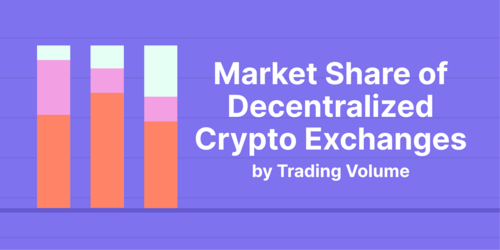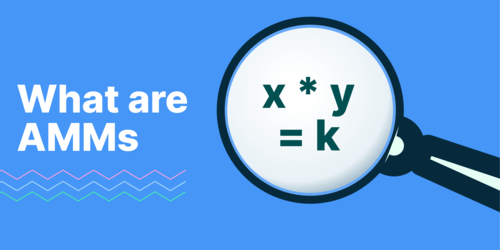

Balancer
BAL Price
How is the price of Balancer (BAL) calculated?
The price of Balancer (BAL) is calculated in real-time by aggregating the latest data across 70 exchanges and 104 markets, using a global volume-weighted average formula. Learn more about how crypto prices are calculated on CoinGecko.
Balancer Price Chart (BAL)
| 1h | 24h | 7d | 14d | 30d | 1y |
|---|---|---|---|---|---|
| 0.4% | 0.0% | 4.6% | 14.4% | 27.6% | 38.7% |
BAL Converter
|
Market Cap
Market Cap = Current Price x Circulating Supply
Refers to the total market value of a cryptocurrency’s circulating supply. It is similar to the stock market’s measurement of multiplying price per share by shares readily available in the market (not held & locked by insiders, governments) Read More |
$199,164,890 |
|---|---|
|
Market Cap / FDV
The proportion of current market capitalization compares to market capitalization when meeting max supply.
The closer the Mkt Cap/FDV to 1, the closer the current market capitalization to its fully diluted valuation and vice versa. Learn more about Mkt Cap/FDV here. |
0.9 |
|
Market Cap / TVL Ratio
Ratio of market capitalization over total value locked of this asset. A ratio of more than 1.0 refers to its market cap being greater than its total value locked.
MC/TVL is used to approximate a protocol’s market value vs. the amount in assets it has staked/locked. |
0.19 |
|
Fully Diluted Valuation
Fully Diluted Valuation (FDV) = Current Price x Total Supply
Fully Diluted Valuation (FDV) is the theoretical market capitalization of a coin if the entirety of its supply is in circulation, based on its current market price. The FDV value is theoretical as increasing the circulating supply of a coin may impact its market price. Also depending on the tokenomics, emission schedule or lock-up period of a coin's supply, it may take a significant time before its entire supply is released into circulation. Learn more about FDV here. |
$221,406,839 |
|
Fully Diluted Valuation / TVL Ratio
Ratio of fully diluted valuation (FDV) over total value locked (TVL) of this asset. A ratio of more than 1.0 means that the FDV is greater than its TVL.
FDV/TVL is used to approximate a protocol’s fully diluted market value vs. the amount in assets it has staked/locked. |
0.22 |
|
24 Hour Trading Vol
A measure of a cryptocurrency trading volume across all tracked platforms in the last 24 hours. This is tracked on a rolling 24-hour basis with no open/closing times.
Read More |
$9,490,977 |
|
Total Value Locked (TVL)
Capital deposited into the platform in the form of loan collateral or liquidity trading pool.
Data provided by Defi Llama |
$1,028,673,604 |
|
Circulating Supply
The amount of coins that are circulating in the market and are tradeable by the public. It is comparable to looking at shares readily available in the market (not held & locked by insiders, governments).
Read More |
56,737,099
|
|
Total Supply
The amount of coins that have already been created, minus any coins that have been burned (removed from circulation). It is comparable to outstanding shares in the stock market.
Total Supply = Onchain supply - burned tokens |
63,073,275 |
|
Max Supply
The maximum number of coins coded to exist in the lifetime of the cryptocurrency. It is comparable to the maximum number of issuable shares in the stock market.
Max Supply = Theoretical maximum as coded |
96,150,704 |
BAL Historical Price
| 24h Range | $3.48 – $3.57 |
|---|---|
| 7d Range | $3.35 – $3.72 |
| All-Time High |
$74.45
95.3%
May 04, 2021 (about 3 years)
|
| All-Time Low |
$2.92
20.2%
Oct 19, 2023 (7 months)
|
How do you feel about BAL today?
What is BAL?

BAL is the governance token for the Balancer Protocol. It can be used to vote on proposals and steer the direction of the protocol.
The total supply of BAL is capped at 100 million tokens, 25 million of which is allocated to the founding members, core developers, advisers, and investors. The rest are being distributed to the community through liquidity mining.
What is Balancer?
Balancer is a multi-token automated market maker (AMM) that functions as a self-balancing weighted portfolio protocol. Balancer is built on the Ethereum network. It allows anyone to create or add liquidity to customizable pools and earn trading fees. Compared to a typical constant product AMM model, Balancer uses a generalization formula that could be adjusted to any number of tokens at any amount of weightage.
It mimics the concept of an index fund where assets are regularly being reallocated based on the price and returns of the assets. Index fund is a common financial instrument that helps investors to achieve risk diversification by maintaining a controlled risk exposure to a portfolio. Rather than paying a portfolio manager to actively or programmatically manage users' funds, Balancer helps solve a similar problem with smart contracts.
How is the Balancer Protocol useful?
There are two types of users that can benefit from using Balancer: liquidity providers and traders. Liquidity providers are the ones who own Balancer pools or participate in shared pools. Traders are the users that buy and sell ERC-20 tokens on the open market.
Liquidity providers can have a controlled exposure to different crypto assets without costly and complicated rebalancing. At the same time, liquidity providers can earn passive income by utilizing the ERC-20 tokens that are sitting idle in their wallets.
Traders can exchange tokens, have access to a diverse set of pools, and seek profit by arbitraging price differences on Balancer with other exchanges.
How does Balancer work?
The fundamental building block of the Balancer Protocol is the Balancer Pool. Balancer Pool can be viewed as an automated, market-making portfolio. Each token asset has an independent weight, and can be traded against other tokens in the pool. For example, you could have a pool with three tokens in the following proportions: 50% DAI, 25% SUSHI, and 25% WETH.
The concept of a Balancer pool is to keep the value function of the pool’s weights and balances to a constant. If the relative prices of the tokens change, the pool as a whole is continuously rebalanced to maintain each token's proportion of the total value.
Each trade that occurs in a Balancer Pool generates a fee for the pool owner. The fee is a percentage of the trading volume and is adjustable by the pool owner when the pool is created.
Balancer has a few pools available:
-
Private Pools - Private pools are completely controlled by the owner. Only the owner can contribute liquidity and has full permissions over the parameters of the pool.
-
Shared Pools - Creators of shared pools only have one opportunity to permanently set the pool parameters including number of tokens, weightage, and trading fees. The creator doesn’t have any special privileges over the shared pool and anyone may contribute liquidity to the pool. The ownership of the pool’s liquidity is tracked by a specific token called the Balancer Pool Token (BPT).
-
Smart Pools - Smart pools are a variation of private pools where the controller is a smart contract, enabling arbitrary logic to determine how parameters can be adjusted. Anyone may contribute liquidity to a smart pool and asset ownership is tracked by BPT.
How are Balancer Pools continuously rebalanced?

Pools are efficiently rebalanced through a multi-dimensional invariant function used to continuously define swap prices between any two tokens in a pool. Essentially, it is an n-dimensional generalization of Uniswap's x * y = k formula.
Whenever market prices are different from those offered by a Balancer Pool, arbitrageurs will make the most profit by trading with that pool until its prices equal those on the external market. When this happens, it cancels out the arbitrage opportunity. These arbitrage opportunities guarantee that, in a rational market, prices offered by any Balancer Pool are identical to the rest of the market.
Instead of doing work and paying fees to rebalance users’ portfolios, Balancer Pool creators earn fees while traders do the rebalancing work for them.
Where can you buy Balancer?
BAL tokens can be traded on centralized crypto exchanges. The most popular exchange to buy and trade Balancer is Bitunix, where the most active trading pair BAL/USDT has a trading volume of $207,955.10 in the last 24 hours. Other popular options include Binance and OrangeX.
What is the daily trading volume of Balancer (BAL)?
The trading volume of Balancer (BAL) is $9,504,879.98 in the last 24 hours, representing a -21.90% decrease from one day ago and signalling a recent fall in market activity.
What is the all-time high for Balancer (BAL)?
The highest price paid for Balancer (BAL) is BTC0.003192, which was recorded on May 04, 2021 (about 3 years). Comparatively, the current price is -95.30% lower than the all-time high price.
What is the all-time low for Balancer (BAL)?
The lowest price paid for Balancer (BAL) is BTC0.00005433, which was recorded on Oct 19, 2023 (7 months). Comparatively, the current price is 20.20% higher than the all-time low price.
What is the market cap of Balancer (BAL)?
Market capitalization of Balancer (BAL) is BTC3,209.9911 and is ranked #291 on CoinGecko today. Market cap is measured by multiplying token price with the circulating supply of BAL tokens (57 Million tokens are tradable on the market today).
What is the fully diluted valuation of Balancer (BAL)?
The fully diluted valuation (FDV) of Balancer (BAL) is BTC3,568.4703. This is a statistical representation of the maximum market cap, assuming the maximum number of 96 Million BAL tokens are in circulation today. Depending on how the emission schedule of BAL tokens are designed, it might take multiple years before FDV is realized.
How does the price performance of Balancer compare against its peers?
With a price increase of 4.80% in the last 7 days, Balancer (BAL) is underperforming the global cryptocurrency market which is up 5.30%, while outperforming when compared to similar Polygon Ecosystem cryptocurrencies which are up 0.00%.
How to add Balancer (BAL) to MetaMask?
Adding Balancer (BAL) to MetaMask allows you to view your token holdings, trade on decentralized exchanges, and more. To add them, you’ll need to import BAL as a token. You can copy BAL’s contract address (0xba100000625a3754423978a60c9317c58a424e3d) and import it manually, or if you've installed MetaMask's chrome extension, add BAL to MetaMask with one click on CoinGecko.
Add BAL to MetaMask.
Balancer Markets
Balancer Latest News


Balancer Guides







































 Or check it out in the app stores
Or check it out in the app stores
